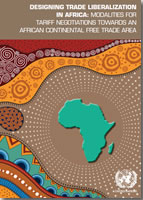
The negotiations for an African Continental Free Trade Area (AfCFTA) were unprecedented in the history of regional trade agreements.
The AfCFTA would ultimately comprise 55 members, 33 of which are least developed countries (LDCs), and encompass six preexisting regional economic communities (RECs), including customs unions, at different stages of integration with cascading and overlapping membership.
In these RECs, a multitude of internal liberalization processes are ongoing, including in inter-REC free trade areas (FTAs) such as Tripartite Free Trade Area (TFTA) and Economic Partnership Agreements (EPAs) with the European Union, as well as under individual RECs.
In such a sui generis context, structuring negotiations was in itself a daunting challenge but identifying operational modalities for tariff negotiations that would serve for boosting intra-African trade was another.
Despite the historic signing in March 2018 of the Agreement Establishing the African Continental Free Trade Area and its entry into force in May 2019, the Agreement is without effect until such a time that operational modalities for AfCFTA tariff negotiations are firmly established, and market access negotiations completed, so that individual AfCFTA parties define their schedules of tariff concessions as an integral part of the Agreement.
This study provides an analysis of ways in which AfCFTA liberalization could effectively be organized and conducted within the constraints imposed by existing policy conditions prevailing in the continent, while seeking to meet the overarching policy objective of boosting intra-Africa trade.
The study was originally prepared as part of UNCTAD’s technical support to the African Union Commission and African Union member States in their conceptualization and development of the AfCFTA tariff negotiations modalities.
As such, the study combines ex ante analysis of underlying policy questions conditioning AfCFTA negotiations conducted prior to the actual negotiations with ex post observation of how actual negotiations have sought to address these challenges.
In so doing, it discusses how the resulting modalities – a blueprint of trade liberalization in Africa – may be assessed in establishing an operational and effective AfCFTA and draws policy implications for the post-modalities phases of tariff negotiations and implementation of liberalization commitments.




